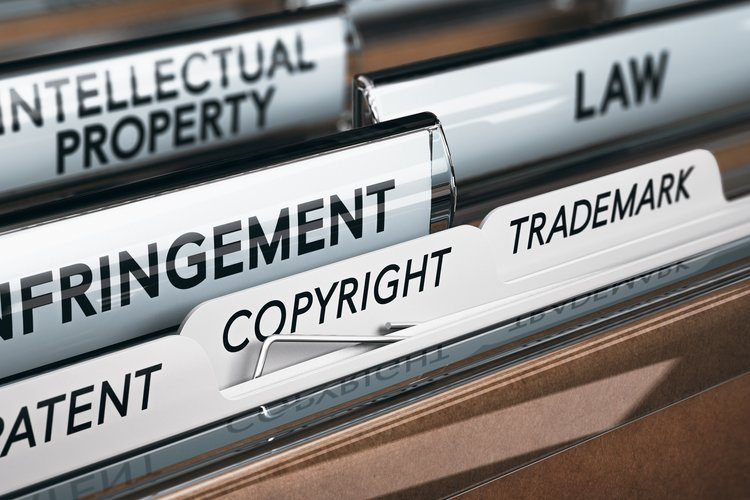Are International Copyright Claims Against Australian Businesses On The Rise?

It’s too early to tell whether this is merely a coincidence or a sign of things to come, but in a matter of weeks, two clients have contacted our office to advise that they have been named as a defendant in a US lawsuit relating to copyright and trade mark infringement claims.
This is unusual for a number of reasons.
In my 20+-year career in the world of intellectual property in Australia, this is the first time I’ve encountered a claim of this particular nature, let alone two such claims in such a short space of time. In my experience, if an Australian company was believed to be infringing on another party’s copyright in the US (for example traders on popular online marketplaces like Etsy and Amazon), they would receive a cease and desist letter and/or a take-down notice from the e-commerce platforms themselves.
However, in both cases referred to above, the Australian businesses received a Temporary Restraining Order (TRO) and a demand for compensation.
While I am an expert in Australian trade mark law, American litigation is out of my jurisdiction and largely unfamiliar. That said, I have done some investigations and research into these types of lawsuits – commonly referred to as Schedule A cases – to understand what they are and what they mean for Australian businesses trading globally.
Let’s take a closer look at Schedule A cases.
Schedule A cases explained
These types of cases are referred to as ‘Schedule A’ cases in the US and they are predominantly being filed in the Northern District of Illinois.
The tag of ‘Schedule A’ cases stems from the fact that the defendants in the lawsuit are not identified publicly in the civil cover sheet, but are instead contained in a separate document called ‘The Partnerships and Unincorporated Associations Identified on Schedule A’. The majority of defendants are foreign entities.
This document is filed under seal and a result, defendants are generally unaware of the lawsuit that has been filed against them.
There are clear intentions for a plaintiff wanting to keep defendants in the dark about the alleged copyright infringements. If the names of the defendants were public, it could mean that they could then remove their products from the marketplace, destroy evidence and conceal assets which could hamper or scupper proceedings and possibly deny plaintiffs due compensation.
The plaintiffs in these cases don’t always use their registered business name and will file the suit under temporary pseudonyms such as ‘XYZ Corporation’.
As soon as the case reaches court, the plaintiff files an ex parte motion for a TRO against the defendants. This motion is also filed under seal.
The plaintiff (or, seemingly more accurately US based law firms) then advises the online platforms that the TRO is in force, and this triggers a freeze on any relevant product listings. However, the TRO can also prevent the defendant from continuing with non-infringing transactions. It’s generally at this stage that the defendant first becomes aware of the copyright infringement allegations.
Because the defendant has been unaware of the proceedings, they are denied the opportunity to oppose the motion, making it straightforward for the court to rule in the plaintiff’s favour.
These Schedule A proceedings are usually quick (generally around three months) and provide US companies with an effective enforcement tool against competitors (which are predominantly foreign) that are alleged to transgress their intellectual property rights.
How are these notices being served?
In the US, technological advancements and practical challenges in finding adverse parties outside of America have led to procedural changes in the way that parties can be served notice. For example, a number of rules have been interpreted to allow service of notice to foreign defendants via ‘alternative means’ (eg electronic mediums such as email) as well as the issuing of TROs without written or oral notice.
Some would say that the sealed document of Schedule A proceedings as well as the electronic authorisation of notice gives the plaintiffs an unfair procedural advantage and results in default judgements being made, but the process is a reality and it would seem, is becoming more common.
What types of companies are being sued?
The Schedule A will often list numerous defendants (sometimes hundreds), thereby enabling companies to pursue allegations of copyright infringement en masse through a single lawsuit.
The system primarily targets parties outside of the US. In our recent experience, this includes very small Australian businesses.
How are these cases being resolved?
It is my understanding that plaintiffs in these Schedule A lawsuits generally seek compensation in the amount of three times the profits derived (with figures ranging from a minimum USD 1000 to a maximum USD 2 million).
Recently, our clients who were named as a defendant in a ‘Schedule A’ lawsuit successfully negotiated to resolve the case at much lower cost minimal cost, but this may not always be possible. For the avoidance of doubt, our recent experience with our 2 clients involved 2 different cases, where different plaintiffs and different law firms were on the other side, which may see differences in how these cases can be resolved and at what price point.
My skills and experience and those of my firm, MMW Trademark Services, are predominantly in Australian trade mark law, but we also assist clients with their international trade mark registration and the protection of their intellectual property rights globally.
What you need to do to prevent a ‘Schedule A’ surprise
Firstly, as it seems these cases may be on the rise, it is a good idea to review the things you sell and promote online to be sure you are not making unauthorised use of any third party trade mark or copyright works.
MMW Trademark Services always recommends that businesses protect their valuable intellectual property through trade mark registration. This is the only way to ensure that a business has enforceable legal rights – and this recommendation applies to Australian businesses transacting domestically as well as internationally.
If you intend to trade internationally on an e-commerce platform (or are already doing so), you should be doing the following:
- Registering your trade mark in the areas you are operating (or intend to trade)
- Ensuring all of your accounts or listings contain up-to-date contact information
- Regularly monitoring your email inboxes (including your spam and junk folders)
MMW Trade Mark services can help you with your trade mark registration in Australia as well as assist in how to trade mark a name and logo internationally – and you can trust our highly experienced team to respond timeously, efficiently, reliably and at an affordable price.
Contact us via email, through the website or by phoning our office 03 8288 1432. Our standards of service excellence apply to our clients across the board – and whether you need trade mark assistance as a multinational giant or a solopreneur – we look forward to assisting you.

